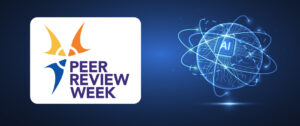For thousands of individuals with cleft and craniofacial conditions, ASHA members are a crucial resource. In recognition of National Cleft and Craniofacial Awareness Month, we’re featuring articles from across the ASHA Journals showcasing the latest research on care for those with cleft palate or craniofacial anomalies.
These featured articles represent the broad spectrum of the ASHA Journals, showcasing content from four different journals. The articles focus on communication assessments, social media and cyberbullying, and the functional limitations caused by cleft and craniofacial conditions.
Forum: Consideration of Structural Anomalies Related to Cleft and Craniofacial Conditions: ASHA’s Special Interest Group 5 provides affiliates with access to hundreds of articles about cleft and craniofacial conditions, and we’re adding more every year. The three articles in this forum are free during the month of July! They focus on informing clinical practice and on helping clinicians navigate assessment and make informed intervention decisions in cases where structural anomalies impact individuals’ daily functioning.
Effectiveness of Speech Intervention in Patients With a Cleft Palate: Comparison of Motor-Phonetic Versus Linguistic-Phonological Speech Approaches: This article compares two different speech intervention approaches in Dutch-speaking children with a cleft palate. Although one intervention strategy did prove more effective, both interventions improved the children’s health-related quality of life.
Holistic Communication Assessment for Young Children With Cleft Palate Using the International Classification of Functioning, Disability and Health: Children and Youth: Speech-language pathologists may focus on speech production during speech assessments with children who have a cleft lip or palate; However, a more holistic approach may be more helpful for this population. This article looks at incorporating speech, language, and cognitive assessments during visits.
Social Media as a Platform for Cyberbullying of Individuals With Craniofacial Anomalies: A Preliminary Survey: In this article, a survey revealed that 88% of children with craniofacial anomalies indicated that they had been bullied due to their face difference or speech disorder. School-based speech-language pathologists can play a key role in antibullying efforts and can educate school personnel on ways to support the needs of these children.
The Use of Nonspeech Oral Motor Exercises in the Treatment of Children With Cleft Palate: A Re-Examination of Available Evidence: This article looks at the current literature on nonspeech oral motor exercise and its use in the treatment of children with cleft palate. Ultimately, the research found that this was not effective in treating children with cleft palate and velopharyngeal dysfunction or speech errors.
You can read last year’s coverage of National Cleft and Craniofacial Awareness and Prevention Month here! To access our full collection of articles about cleft palate, craniofacial conditions, and other genetic and congenital disorders, check out the ASHA Journals Topics Page. For more information on how to access additional cleft and craniofacial content from Perspectives, read about becoming an affiliate of Special Interest Group 5. We hope you’re able to take some time to explore these articles during National Cleft and Craniofacial Awareness and Preventio







